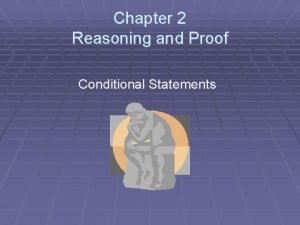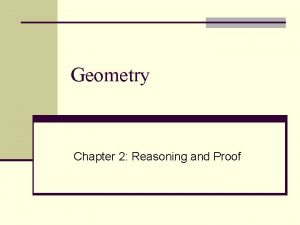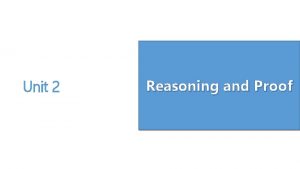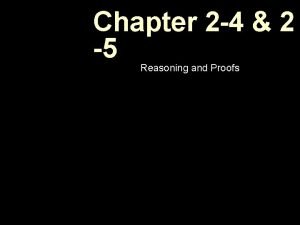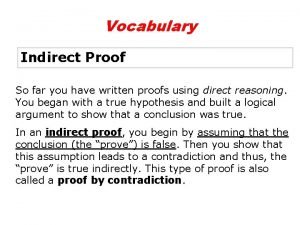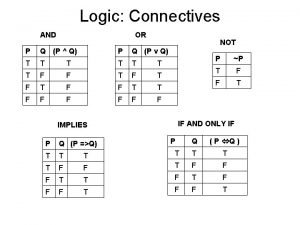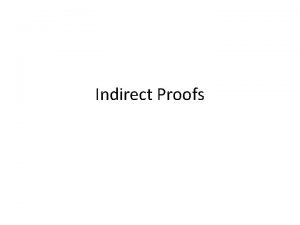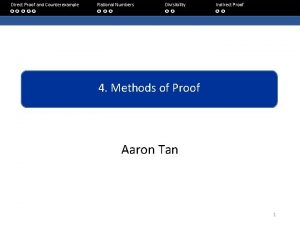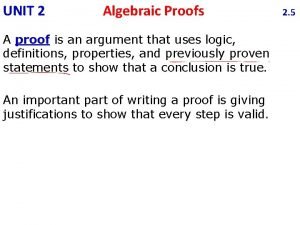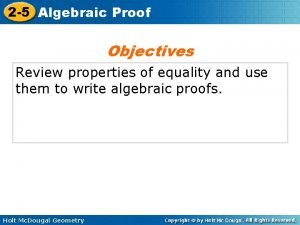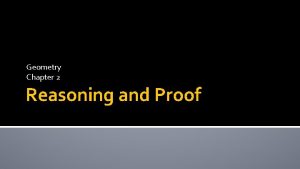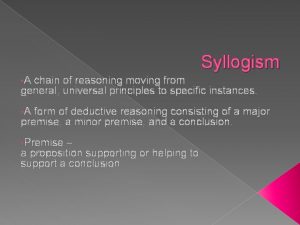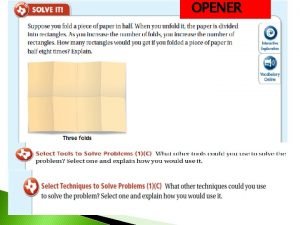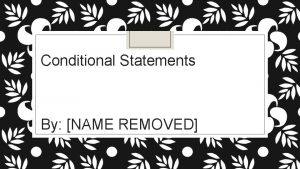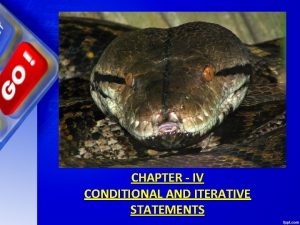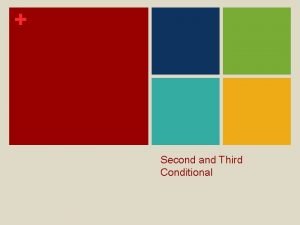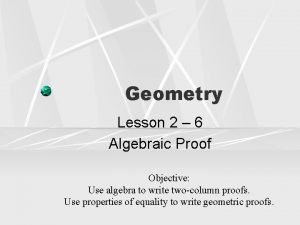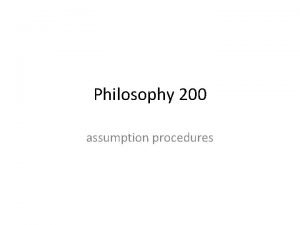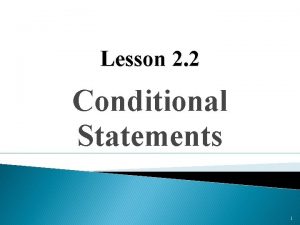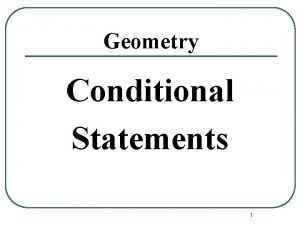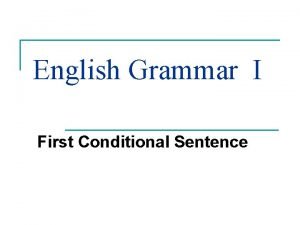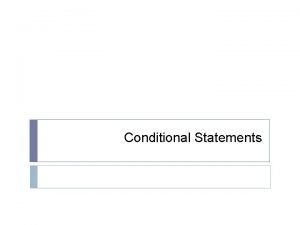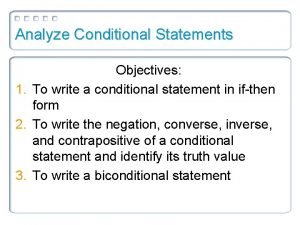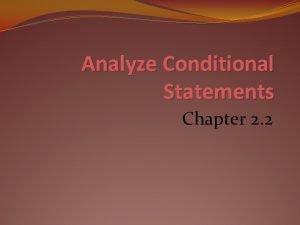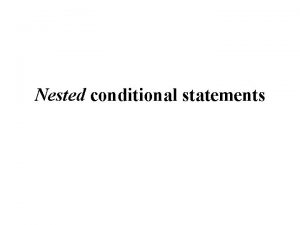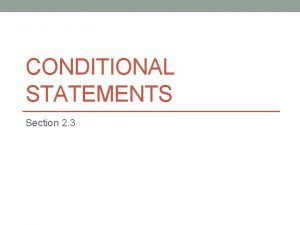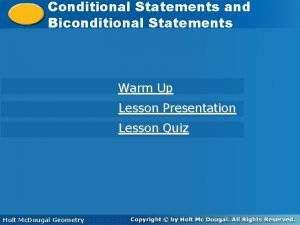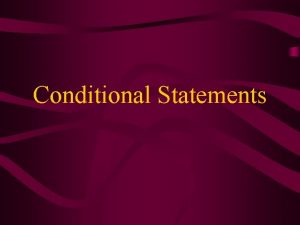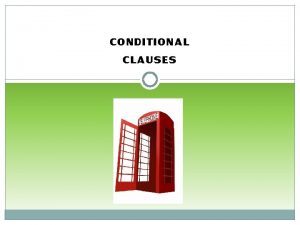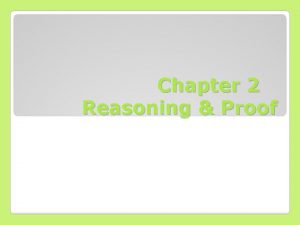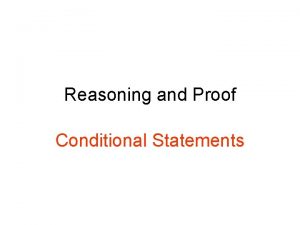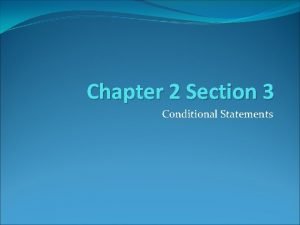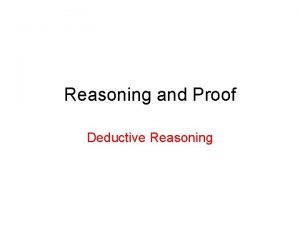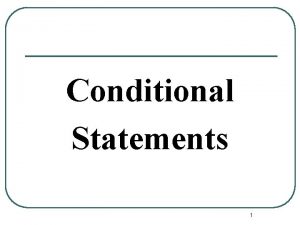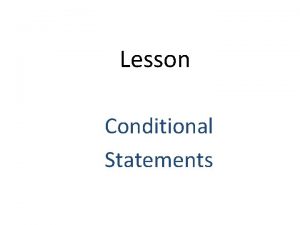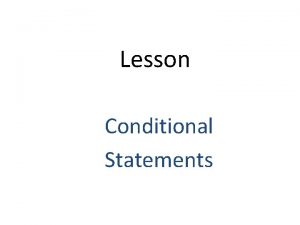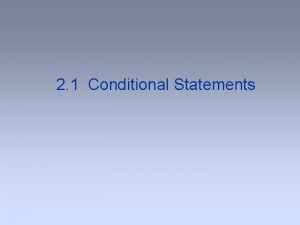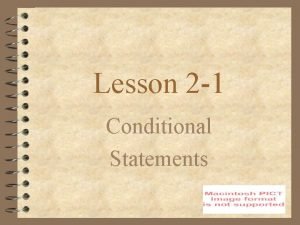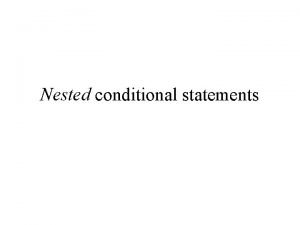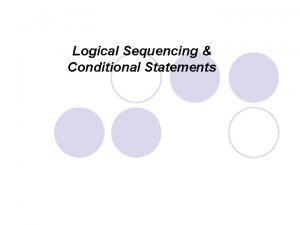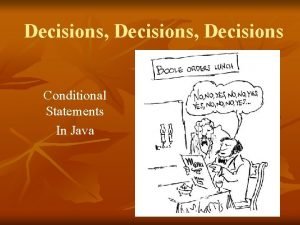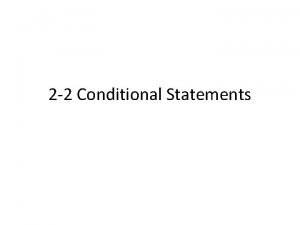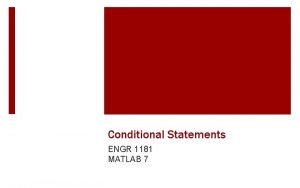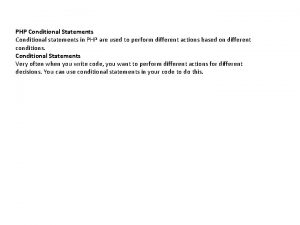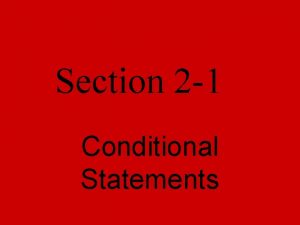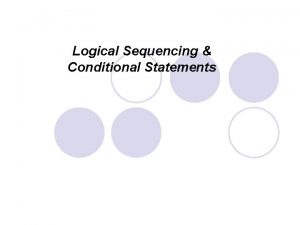Chapter 2 Reasoning and Proof Conditional Statements Introduction






























- Slides: 30

Chapter 2 Reasoning and Proof Conditional Statements

Introduction We will be discussing how we use logic to develop mathematical proofs. When writing proofs, It is important to use exact and correct mathematical language. We must say what we mean!

Introduction Do you recognize the following conversation?

"Then you should say what you mean. " the March Hare went on. "I do, " Alice hastily replied; "at least -- at least I mean what I say -- that's the same thing, you know. " "Not the same thing a bit!" said the Hatter, "Why, you might just as well say that 'I see what I eat' is the same thing as 'I eat what I see'!"

"You might just as well say, " added the March Hare, "that 'I like what I get' is the same thing as 'I get what I like'!“ "You might just as well say, " added the Dormouse, who seemed to be talking in his sleep, "that 'I breathe when I sleep' is the same thing as 'I sleep when I breathe'!“ "It is the same thing with you, " said the Hatter, and here the conversation dropped, and the party sat silent for a minute.

Charles Dodgson lived from 1832 to 1898 Dodgson was a mathematics lecturer and author of mathematics books who is better known by the pseudonym Lewis Carroll. He is known especially for Alice's Adventures in Wonderland.

Conditional Statements In order to analyze statements, we will translate them into a logic statement called a conditional statement. (You will be taking notes now)

Essential Question: How do I recognize and analyze a conditional statement?

Conditional Statements conditional statement 1. A _________ is a statement “if-then” form. that can be expressed in ____ 2. A conditional statement has _____ two parts. hypothesis is the ____ “if” part. The __________ conclusion is the ______ “then” part.

Conditional Statements Example: (Original) I breathe when I sleep (Conditional) If I am sleeping, then I am breathing.

Conditional Statements To fully analyze this conditional statement, we need to find three new conditionals: Converse Inverse Contrapositive

Conditional Statements § The ____ converse of a conditional statement is formed by switching the hypothesis and the conclusion. § Example: (Conditional) If I am sleeping, then I am breathing. (Converse) If I am breathing, then I am sleeping.

2. 1 Conditional Statements § The ____ inverse of a conditional statement is formed by negating (inserting “not”) the hypothesis and the conclusion. § Example: (Conditional) If I am sleeping, then I am breathing. (Converse) If I am not sleeping, then I am not breathing.

2. 1 Conditional Statements contrapositive of a conditional statement § The _______ is formed by negating the hypothesis and the conclusion of the converse. § Example: (Converse) If I am breathing, then I am sleeping. (Contrapositive) If I am not breathing, then I am not sleeping.

Conditional Statements Conditional ( if…then) Inverse ( insert not ) Converse ( switch ) Contrapositive ( switch and insert not ) If I am sleeping, then I am breathing. If I am not sleeping, then I am not breathing. If I am breathing, then I am sleeping. If I am not breathing, then I am not sleeping.

Conditional Statements The conditional statement, inverse, converse and contrapositive all have a truth value. That is, we can determine if they are true or false. When two statements are both true or both false, we say that they are logically equivalent.

Conditional Statements Conditional If m<A = 30°, then <A is T acute. Inverse (insert not) If m<A ≠ 30°, then <A is F not acute. Converse (switch) If <A is acute, then m<A = 30°. Contrapositive If <A is not acute, then (switch then m<A ≠ 30°. insert not) F T

Conditional Statements The conditional statement and its contrapositive have the same truth value. They are both true. They are logically equivalent.

Conditional Statements The inverse and the converse have the same truth value. They are both false. They are logically equivalent.

Practice Translate the following statement into a conditional statement. Then find the converse, inverse and contrapositive. “A cloud of steam can be seen when the space shuttle is launched”

1. Identify the underlined portion of the conditional statement. A. hypothesis B. Conclusion C. neither

2. Identify the underlined portion of the conditional statement. A. hypothesis B. Conclusion C. neither

3. Identify the underlined portion of the conditional statement. A. hypothesis B. Conclusion C. neither

4. Identify the converse for the given conditional. A. If you do not like tennis, then you do not play on the tennis team. B. If you play on the tennis team, then you like tennis. C. If you do not play on the tennis team, then you do not like tennis. D. You play tennis only if you like tennis.

5. Identify the inverse for the given conditional. A. B. C. D. If 2 x is not even, then x is not odd. If 2 x is even, then x is odd. If x is even, then 2 x is odd. If x is not odd, then 2 x is not even.

Representation with Venn Diagrams § If you like oranges, then you like apples.

Venn Diagrams § Illustrate how if Betty likes oranges, then she is in the inner loop, which means that she is in the outer loop as well.

Conclusion § Betty likes oranges § Betty likes apples.

Your Turn § Show if Bobby likes apples, then you don’t know if he likes oranges. § Show if Peter does not like apples, then he does not like oranges

2. 1 Reasoning and Proof § Homework Assignment § SAT page 8 § #1 - 6
 Unit 2 logic and proof homework 3 conditional statements
Unit 2 logic and proof homework 3 conditional statements Chapter 2 reasoning and proof
Chapter 2 reasoning and proof Chapter 2 reasoning and proof answer key
Chapter 2 reasoning and proof answer key Chapter 2 reasoning and proof answer key
Chapter 2 reasoning and proof answer key Indirect proof assumption
Indirect proof assumption Direct proof and indirect proof
Direct proof and indirect proof Indirect proof steps
Indirect proof steps Direct proof and indirect proof
Direct proof and indirect proof Unit 2 logic and proof homework 7 algebraic proofs
Unit 2 logic and proof homework 7 algebraic proofs 2-5 algebraic proof
2-5 algebraic proof Reasoning and proof unit test
Reasoning and proof unit test Chain syllogism
Chain syllogism Unit 1 reasoning and proof answers
Unit 1 reasoning and proof answers Deductive argument examples
Deductive argument examples Reasoning example
Reasoning example Reasoning vs evidence
Reasoning vs evidence Example of deductive reasoning in biology
Example of deductive reasoning in biology Deductive reasoning
Deductive reasoning Inductive vs deductive
Inductive vs deductive Patterns and inductive reasoning
Patterns and inductive reasoning 2-2 practice conditional statements
2-2 practice conditional statements Iterative statements
Iterative statements Conditional past
Conditional past 2-6 algebraic proof answers
2-6 algebraic proof answers Conditional proof examples
Conditional proof examples 2-2 conditional statements
2-2 conditional statements Conditional statements geometry
Conditional statements geometry First conditional sentence structure
First conditional sentence structure Parts of conditional statement
Parts of conditional statement Symbol of conditional statement
Symbol of conditional statement Bioconditional statement
Bioconditional statement
